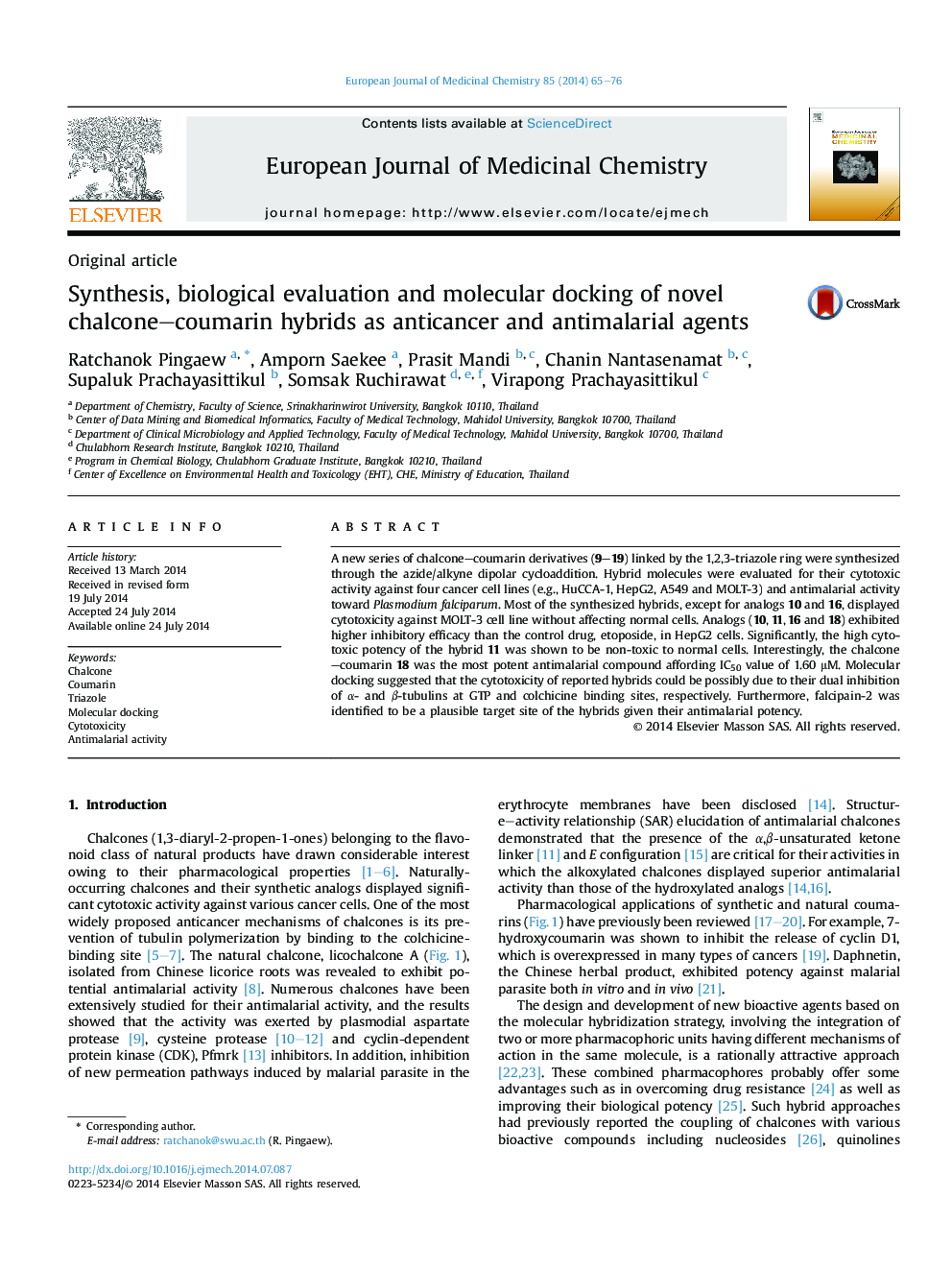| Article ID | Journal | Published Year | Pages | File Type |
|---|---|---|---|---|
| 1392314 | European Journal of Medicinal Chemistry | 2014 | 12 Pages |
•Novel chalcone–coumarin hybrids (9–19) were synthesized.•Hybrids displayed cytotoxic and antimalarial activities.•Hybrids (10, 11, 16, 18) showed higher cytotoxicity toward HepG2 cells than etoposide.•The hybrid 18 was the most potent antimalarial agent without affecting normal cells.•Tubulin and falcipain-2 were identified to be the plausible target sites of actions.
A new series of chalcone–coumarin derivatives (9–19) linked by the 1,2,3-triazole ring were synthesized through the azide/alkyne dipolar cycloaddition. Hybrid molecules were evaluated for their cytotoxic activity against four cancer cell lines (e.g., HuCCA-1, HepG2, A549 and MOLT-3) and antimalarial activity toward Plasmodium falciparum. Most of the synthesized hybrids, except for analogs 10 and 16, displayed cytotoxicity against MOLT-3 cell line without affecting normal cells. Analogs (10, 11, 16 and 18) exhibited higher inhibitory efficacy than the control drug, etoposide, in HepG2 cells. Significantly, the high cytotoxic potency of the hybrid 11 was shown to be non-toxic to normal cells. Interestingly, the chalcone–coumarin 18 was the most potent antimalarial compound affording IC50 value of 1.60 μM. Molecular docking suggested that the cytotoxicity of reported hybrids could be possibly due to their dual inhibition of α- and β-tubulins at GTP and colchicine binding sites, respectively. Furthermore, falcipain-2 was identified to be a plausible target site of the hybrids given their antimalarial potency.
Graphical abstractFigure optionsDownload full-size imageDownload as PowerPoint slide
